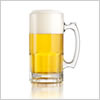Coșul dumneavoastră

 World: Total alcohol market volumes down 1% in 2024
World: Total alcohol market volumes down 1% in 2024
The global beverage alcohol market faced a challenging year in 2024, with total volumes declining by 1%, according to new data from IWSR. The downturn was led by the two largest markets, the United States and China, where volumes fell by 3% and 5% respectively. Despite these declines, analysts have identified several areas of growth and opportunity across different segments and regions, Vinetur reported on July 11.
In the United States, trading conditions remain difficult due to ongoing political and economic uncertainty. However, IWSR forecasts highlight five key value growth opportunities between 2024 and 2034: cocktails and long drinks, no-alcohol beer, Tequila, US whiskey, and hard tea. No-alcohol beer stands out as a particularly strong performer, with volumes up 23% in 2024 and expected to grow at an annual rate of 18% through 2029. This growth is driven by consumer interest in wellness, moderation, and innovation, as well as increased availability in bars and restaurants.
Super-premium beer also showed resilience in the US market, being the only beer price tier to grow in 2024 with a 2% increase in volume. It is projected to expand at a rate of 4% annually through 2029, even as the overall beer category contracts. Agave spirits, especially Tequila, are experiencing a shift toward premiumization. While overall category growth is expected to be modest at 1% per year through 2029, the premium segment is forecast to grow at 6% annually. Reposado Tequila has become especially popular due to its approachable price and smooth taste.
Ready-to-drink (RTD) beverages continue to attract consumers in the US. Hard tea led the RTD category with a volume increase of 31% in 2024. The segment is expected to maintain double-digit annual growth through 2029 as more premium, spirit-based options enter the market.
In China, all major beverage alcohol categories reported declines in 2024. However, premium beer was an exception, growing by 1% even as total beer volumes dropped by 5%. This trend reflects a shift among Chinese consumers toward higher quality products. Local brewers have responded by launching premium lines and producing foreign brands domestically.
China’s wine market continues its long-term decline but shows promise at the premium end. While total wine volumes are expected to shrink by 2% annually through 2029, premium and super-premium wines are forecast to grow by 1% and 3% per year respectively. Interest is particularly strong for high-quality local wines from regions like Ningxia.
Imported white spirits are gaining ground in China as consumers move away from dark spirits and embrace more casual drinking occasions. Gin volumes rose by 20% in 2024 and vodka by 4%. Both categories are expected to see steady growth over the next five years.
Canada’s beverage alcohol market is being reshaped by political developments. Following tariff announcements from President Trump’s administration, Canadian consumers have turned away from US products. A recent IWSR survey found that nearly seven out of ten Canadian adults had stopped buying US alcohol products, with similar numbers saying they were unlikely to do so in the future. As a result, US wine volumes in Canada are projected to fall by more than 80% in 2025 before gradually recovering. US spirits are also expected to see a sharp decline this year after growing in 2024.
This shift opens opportunities for domestic producers and non-US imports. Local wine volumes are predicted to rise by 9% in Canada this year, while local spirits could grow by 6%. Substitutes such as Scotch whisky and wines from Australia and France may also benefit from the boycott of American products.
Spain stands out as a bright spot amid global challenges for beverage alcohol markets. Premium-plus beer has seen accelerated growth thanks to more affluent drinkers, increased tourism, and changing consumption habits favoring lower-alcohol options during daytime hours. While total beer volumes were flat last year and are expected to remain stable through 2029, premium beer grew by 3% in 2024 and is forecasted for continued expansion.
Still wine is another strong performer in Spain. The category benefited from more food-oriented drinking occasions and consumer interest in value-for-money products. Still wine volumes grew by 3% last year and are expected to rise by about 1% annually through the end of the decade. White wine saw particularly strong growth of 5% in volume during 2024.
Despite ongoing challenges in major markets like the US and China, these findings suggest that targeted innovation and premiumization can create new opportunities for growth within specific segments and regions of the global beverage alcohol industry.
Înapoi





